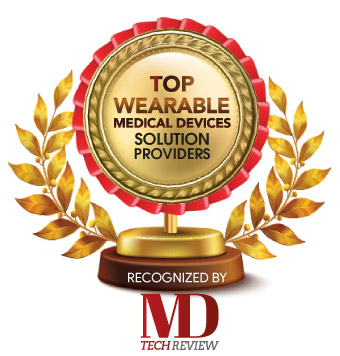Patients who are more aware of their health and biological signs may begin to participate effectively in a conversation on their therapy. They should understand their future health consequences in the long run and know that both their thoughts and behaviors matter.
Fremont, CA:Wearable technologies have come a long way from only being entertaining to providing practical health benefits. Previously, fitness enthusiasts and professional athletes enjoyed wearables with simple features. But today, the capabilities of wearables have emerged well beyond measuring the steps taken and the calories consumed.Next generations of smart wearables expanded their data collection and analytical abilities toward overall health awareness. They start identifying patterns related to the user’s mood, sleep quality and other vitals. Today, wearables are instead marketed as personal devices for people who is interested in making more informed choices about their health.
This pattern in personalized health monitoring was aligned with the value-based care approach and its focus on recision medicine. The new healthcare industry aims to use wearables as a primary data source to create highly personal and versatile patient treatment plans, allowing for prompt treatment changes based on subtle changes in health trends.In addition, wearables can also help foster patient responsibility for their care routines and facilitate informed patient-physicist contact. Smart wearable manufacturers and medical-grade software vendors often rely on specialized software solutions that are appropriate for clinical use. Although researchers and decision-makers will benefit from wearables to help their efforts, it is all a matter of two major groups of sensors capturing unique biological signs.
recision medicine. The new healthcare industry aims to use wearables as a primary data source to create highly personal and versatile patient treatment plans, allowing for prompt treatment changes based on subtle changes in health trends.In addition, wearables can also help foster patient responsibility for their care routines and facilitate informed patient-physicist contact. Smart wearable manufacturers and medical-grade software vendors often rely on specialized software solutions that are appropriate for clinical use. Although researchers and decision-makers will benefit from wearables to help their efforts, it is all a matter of two major groups of sensors capturing unique biological signs.
See Also: Top Heakthcare Technology Companies
Physiological sensors measure biological signs using electrical, thermal, acoustic and optical components. It tracks body functions such as intestine and respiratory activity, vital signs such as blood pressure, heart rate, temperature, blood oxygen saturation and more. Both consumer-facing and ambulatory-use wearables allow for a wide range of biological tracking options. Some include smartwatches capable of producing ECGs, detecting falls and irregular heart rhythms, patch sensors for prenatal contraction tracking, abdominal patches that analyze gastrointestinal motility and promote diagnoses of digestive disorders, and fertility trackers with heart rate, temperature and stress level monitoring capabilities.
Patients who are more aware of their health and biological signs may begin to participate effectively in a conversation on their therapy. They should understand their future health consequences in the long run and know that both their thoughts and behaviors matter.


